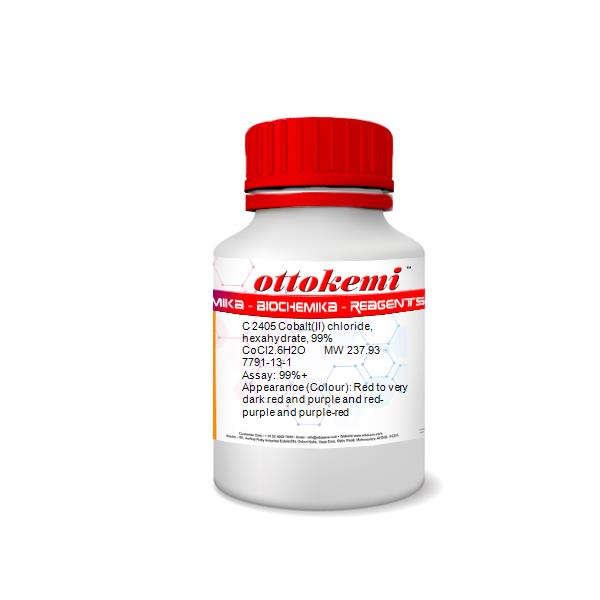

May cause allergy or asthma symptoms or breathing difficulties if inhaled Then store and dispose of according to local regulations. If appropriate, moisten first to prevent dusting. Sweep spilled substance into covered containers. Do NOT let this chemical enter the environment.

Personal protection: particulate filter respirator adapted to the airborne concentration of the substance. Give one or two glasses of water to drink. Vomiting.ĭo not eat, drink, or smoke during work. Wear safety goggles or eye protection in combination with breathing protection.įirst rinse with plenty of water for several minutes (remove contact lenses if easily possible), then refer for medical attention.Ībdominal pain.
COBALT II CHLORIDE SKIN
Rinse skin with plenty of water or shower. Use local exhaust or breathing protection.įresh air, rest. PREVENT DISPERSION OF DUST! AVOID ALL CONTACT! In case of fire in the surroundings, use appropriate extinguishing media. Gives off irritating or toxic fumes (or gases) in a fire. These studies suggest that conjugation of compounds in repellents/essential oils/natural products/food additives with copper(II) or cobalt(III) metal centers may not be safe, especially in tropical and subtropical places, where several dengue infection cases and deaths are reported annually or in places with increased ZIKV caused microcephaly.ġ 10-phenanthroline Copper(II) and cobalt(III) Dengue virus Thiosemicarbazones Viral replication Zika virus.Ĭopyright © 2017 Elsevier B.V. Also, treatment with copper(II) or cobalt(III) conjugated compounds increased viral titers and number of plaque formations. Enhanced ZIKV/DENV2 capsid mRNA or envelope protein loads were evident in mosquito cells and human keratinocytes, when treated with compounds before/after infections. Here, we show that thiosemicarbazone ligand(s) derived from 2-acetylethiazole or citral or 1,10-phenanthroline upon conjugation with copper(II) or cobalt(III) metal centers enhances dengue virus (serotype 2 DENV2) and/or Zika virus (ZIKV) infections in mosquito, mouse and human cells. Use of chemicals/repellents against mosquito bites and transmission of microbes has been the topic of interest for many years. Mosquito-borne diseases are of great concern to the mankind.


Taken together, these findings suggest that use of Cu(II) or Co(III) conjugation to organic compounds, in insect repellents and/or food additives could enhance DENV2/ZIKV loads in human cells and perhaps induce pathogenesis in infected individuals or individuals pre-exposed to such conjugated complexes. Also, we found that copper(II) chloride dehydrate (CuCl 2♲H 2O) or cobalt(II) chloride hexahydrate (CoCl 2♶H 2O) alone had no effects as "free" cations. In addition, we tested bis(1,10-phenanthroline)copper(II) chloride (Cl 2, (compound 5) and tris(1,10-phenanthroline)cobalt(III) chloride (Cl 3, (compound 6) that also showed enhanced DENV2 loads. No changes in loads of E-protein were found in ZIKV-infected C6/36 cells, when compounds were treated after infection. Also, pre- or post treatments with conjugated compounds 2 or 4 showed higher loads of ZIKV or DENV2 envelope (E) protein in HaCaT cells. Treatment with the compounds 2 or 4 enhanced ZIKV and DENV2 RNA levels in HeLa cell line and primary cultures of mouse bone marrow derived dendritic cells. Enhanced dengue viral plaque formation was also noted at the tested dose of 100μM, suggesting higher production of infectious viral particles. Treatment of both cell lines with compounds 2 or 4 showed increased dengue viral titers at all three tested doses. In this study, we show that four compounds comprising of thiosemicarbazone ligand derived from 2-acetylethiazole viz., (E)-N-ethyl-2-hydrazinecarbothioamide (acetylethTSC) (compound 1), a copper(II) complex with acetylethTSC as a ligand (compound 2), a thiosemicarbazone ligand-derived from citral (compound 3) and a cobalt(III) complex with a citral-thiosemicarbazone ligand (compound 4) increased DENV2 and ZIKV replication in both mosquito C6/36 cells and human keratinocytes (HaCaT cells). However, studies to show the effect of conjugation of copper(II) or cobalt(III) metal centers to thiosemicarbazone ligand(s) derived from either food additives or mosquito repellent such as 2-acetylethiazole or citral, respectively, on Zika virus (ZIKV) or dengue virus (serotype 2 DENV2) infections have not been explored. Trace elements such as copper and cobalt have been associated with virus-host interactions.


 0 kommentar(er)
0 kommentar(er)
